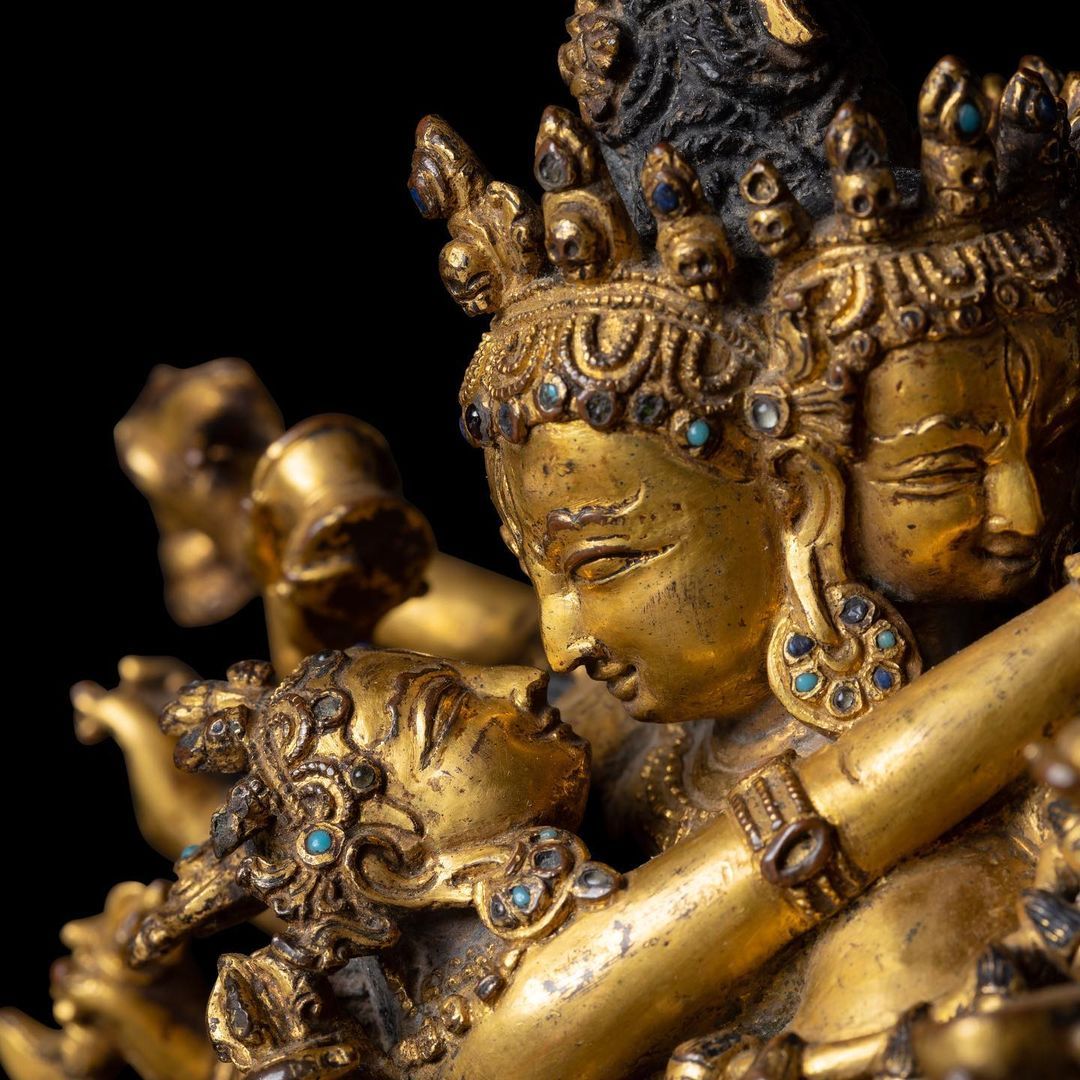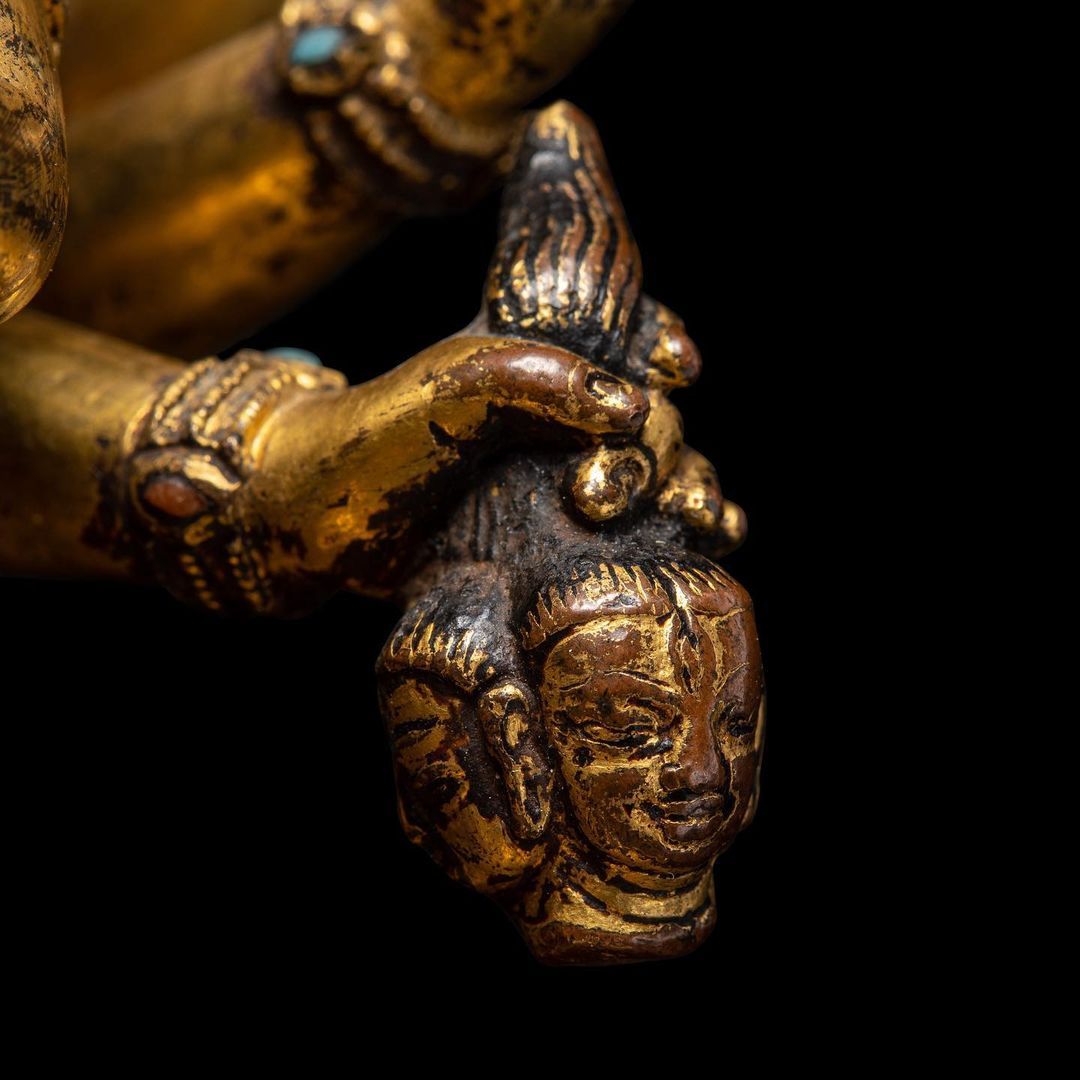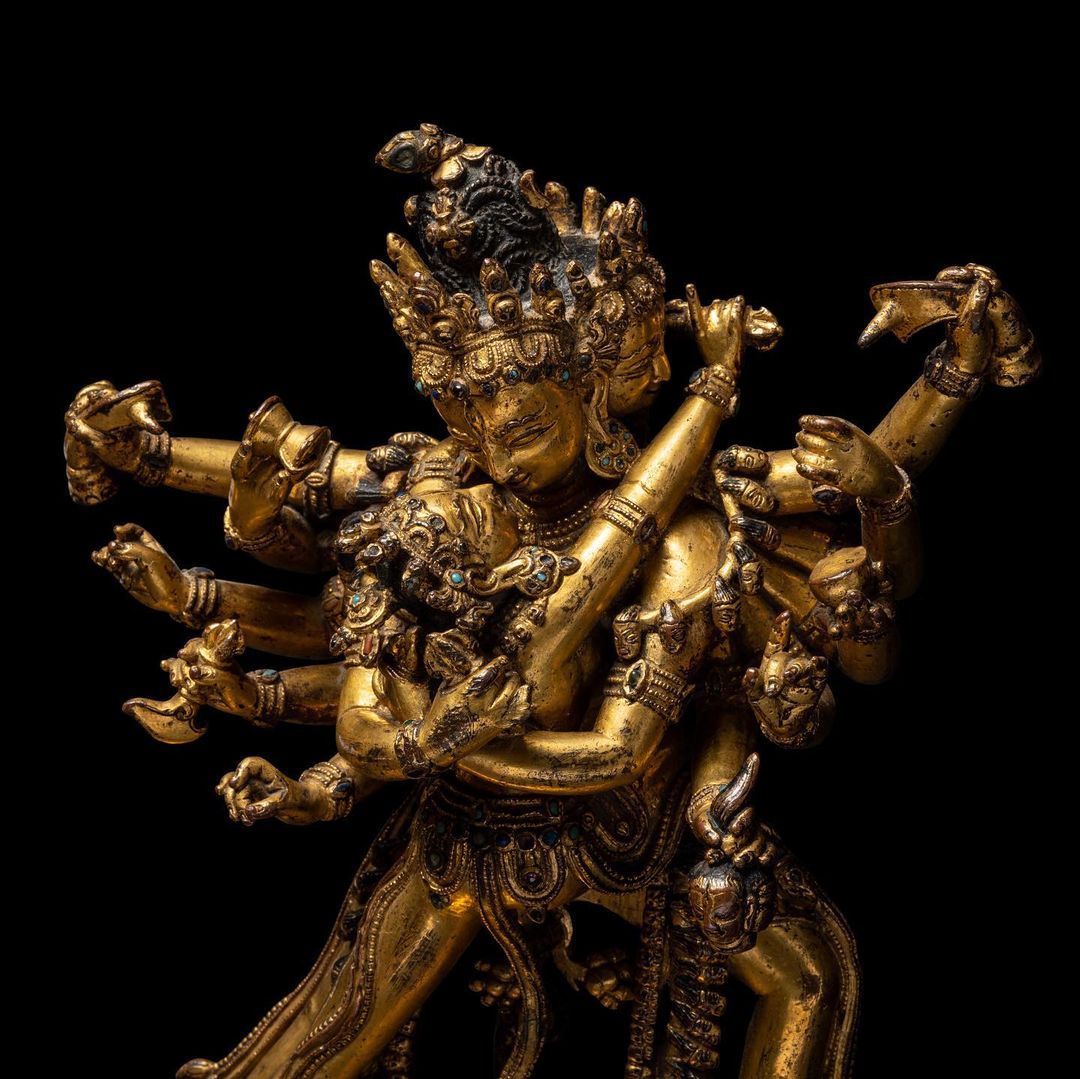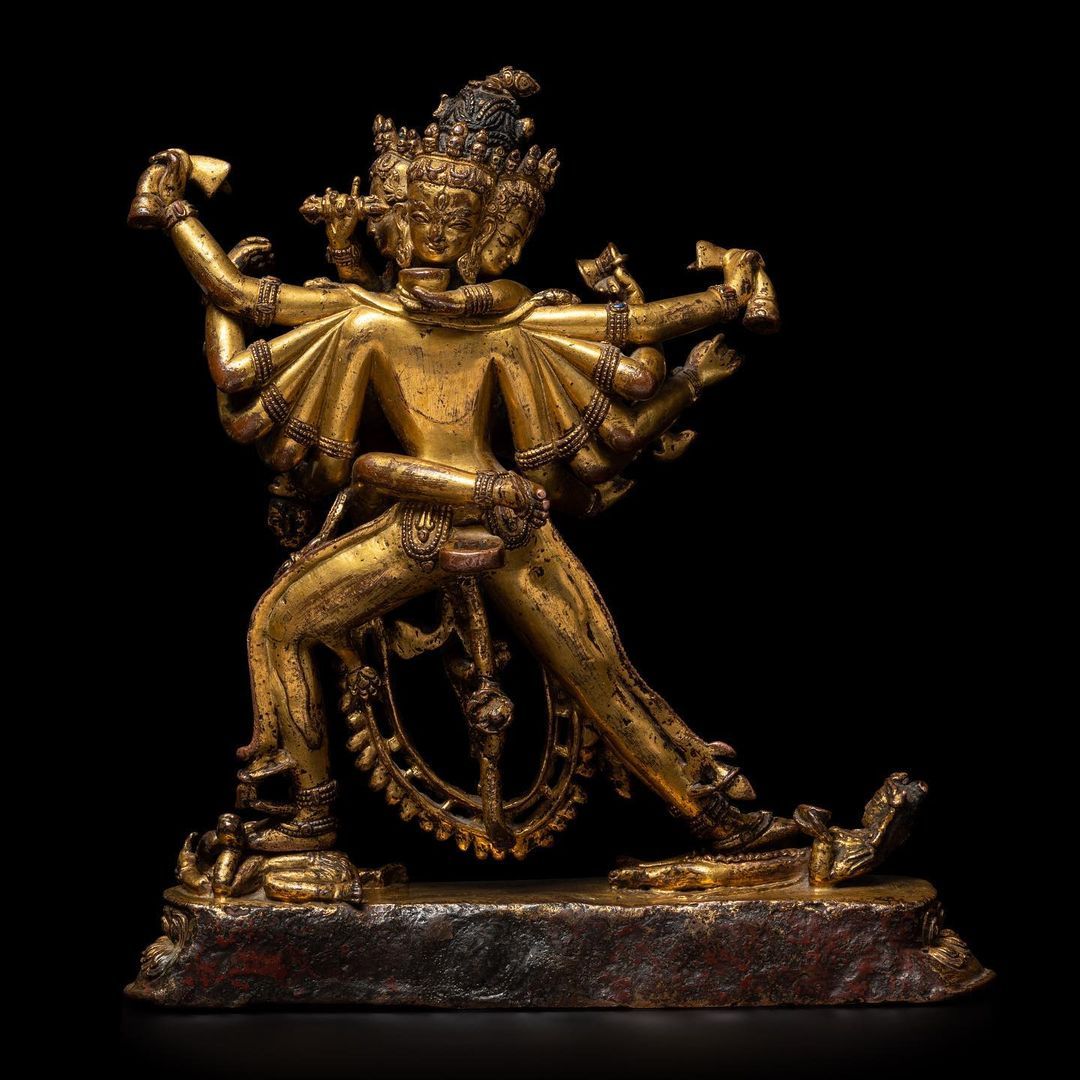Chakrasamvara and Vajrayogini Nepal, 15th-16th century
Kapoor Galleries Inc. wrote :
Chakrasamvara and Vajrayogini are important deities of the highest class of yogic practice in Vajrayana Buddhism. This small gilt-bronze sculpture of meditational deities in union exudes an energy that reaches far beyond the boundaries of its surface.Chakrasamvara is depicted here according to Tibetan Buddhist convention, with four faces and twelve hands, in alidhasana, embraced by his consort Vajrayogini. Together they trample the deities Bhairava (who lies prostrate) and Kalaratri (who lies supine). The multi-headed tutelary deity holds various attributes with his many arms radiating around him, the principle arms holding a vajra and bell and the uppermost holding the ends of a tiger skin which he drapes over his back.
This lustrous gilt-bronze sculpture is representative of the highest quality Nepalese craftsmanship. Its magnificence is embedded not only in the semi-precious inset ornaments that adorn the deities gleaming golden, perfectly proportioned bodies, but perhaps more so in the sweetness of the countenances and the apparent meeting of the male and female manifestation’s gazes—the intangible, yet most-human feature of this sculpture.
Newar craftsmen made Vajrayana buddhist figures such as the present for both Nepalese and Tibetan patrons in both Nepal and Tibet. However, the unfinished backside of the present figure’s lotus base and the remnants of red pigment thereon are telltale signs of a geographical Nepalese provenance.
(via Instagram: Kapoor Galleries Inc.)









